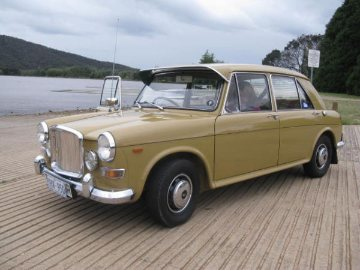Vanden Plas
Vanden Plas is the name of a company of coachbuilders which produced bodies for specialist and upmarket automobile manufacturers. Later the name became a top-end luxury model designation for cars of various subsidiaries of BMC, British Leyland and the Rover Group. The company originated in Brussels in 1870. In 1946 it became a subsidiary of the Austin Motor Company and produced Austin’s A135 Princess model.
Badge Engineering
In 1957/8, Vanden Plas was asked to add luxury fittings to a batch of Austin A105 Westminster cars, beginning the practice of using the company’s skills and name for badge-engineered, (and genuinely improved), luxury versions of many of the BMC (and later, British Leyland) cars such as the 1100/1300 range and the Allegro, (known as the Vanden Plas 1500 and 1700). From 1985 to 1989, Austin Rover made upmarket Vanden Plas models within the Metro, Maestro, Montego and Rover SD1 range. The name was also used on some Jaguar models sold in North America until 2009.
BMC ADO16
The BMC ADO16 is a family of economical small family cars built by BMC and later British Leyland. It was launched in 1962, and for most of the next decade was consistently the UK’s bestselling car. Models included Austin 1100 & 1300, Austin America, Glider and Victoria, BMC 1100, Innocenti IM3, MG 1100 & 1300, Morris 1100 & 1300, Riley 1300 and Kestrel, Vanden Plas Princess 1100 & 1300, Wolseley 1100, 1275 & 1300. The Vanden Plas Princess 1100/1300 model was produced between 1963 and 1974, with a total of 43,741 being made.
My Vanden Plas Princess 1300
This example was built in England on 31 October 1972, despatched to Newport, Wales on 13 November 1972, and first registered on 1 December 1972. In 1979 it was privately imported into Australia by an Australian couple who had lived near London for many years. The car came to Australia aboard the cruise ship, Leonid Sobinov, famous as the ship from which a Ukrainian woman, Liliana Gasinskaya, squeezed through a porthole wearing only a red bikini in 1979, and splashed into the Sydney Harbour and world headlines.
The husband of the couple that brought the car to Australia in 1979 has been referred to as one of the world’s best-known lepidopterists, having worked for many years at the British Museum. The couple currently live in Victoria.
The car was extensively renovated in about 2008, and from 2009 to 2012 was owned by twin brothers who live in Sydney and used to work at BMC in Zetland.
I bought the car in February 2012, and have not had to do anything to it, other than replace the heater control valve, and do the regular servicing. The speedometer was playing up, so that’s been sent away to be repaired. The car is currently on full rego as I use it to go to work, two days a week, at the Master Builders Association in Fyshwick. The DFO is nearby, and kindly provides free, all day, undercover parking.
Like many buying classic cars, I bought the car because of past associations: in the 1960s and early 1970s, I lived in London and had a very basic Austin 1100 which lasted for many years until I sold it to my Mum to finance my overland trip to Australia in 1972. Also, my wife had owned a Morris Nomad, (an Australian variant of the 1100), in her student days at the ANU.
The 1300 replaced a 1971 MGB that I had just sold after 38 years of ownership. The current owner of that car had it on display at the recent Wheels meeting.
(Sources: Wikipedia, The Age)
Dave Byers
